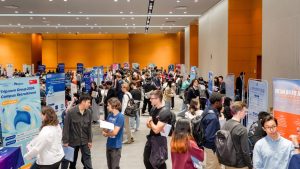10 Feb 2025
On January 15, 2025, the Advanced Materials Research Center (AMRC) at Xi'an Jiaotong-Liverpool University with strong support from the School of Science (SCI) successfully hosted its year-end symposium. The event aimed to bring together AMRC’s key strategic partners to share recent core research achievements and developments, foster better communication and connections within the AMRC ecosystem, and lay the groundwork for more high-value collaborations and impactful outcomes in the coming year. The symposium attracted over 100 researchers from various disciplines across XJTLU, as well as experts, scholars, and students from institutions such as Suzhou Laboratory, Gusu Laboratory, Soochow University, the Suzhou Institute of Nano-Tech and Nano-Bionics of the Chinese Academy of Sciences, and Harbin Institute of Technology's Suzhou Research Institute. Representatives from the industrial sector, including Zhiquan Technology, Bluewater Ecology and others, also attended the event to discuss challenges and breakthroughs in materials science.
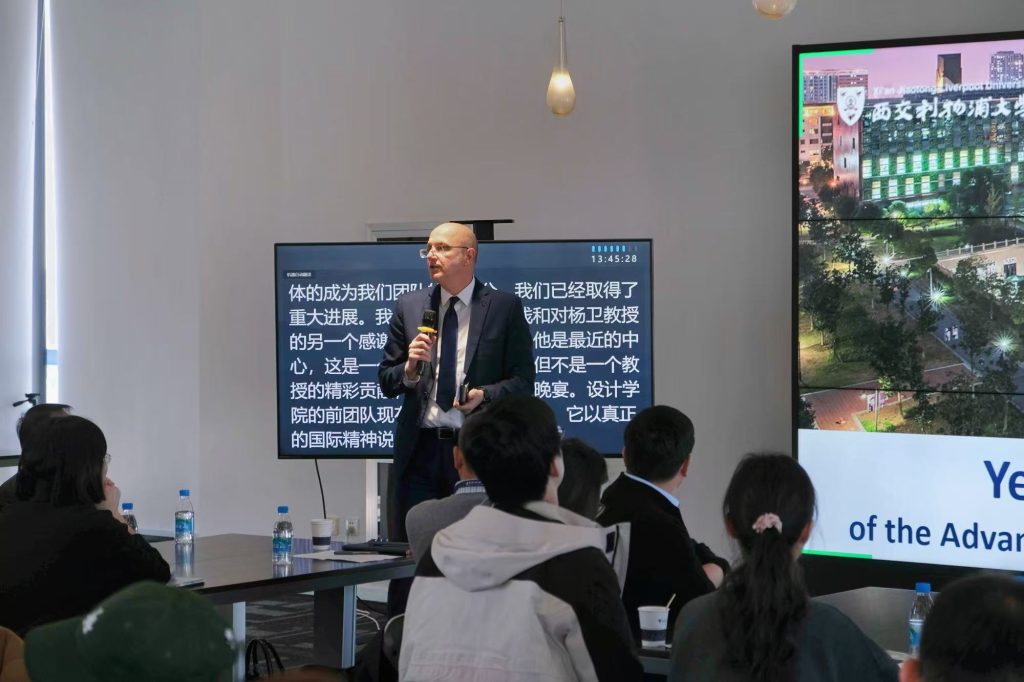
The session commenced with an opening address by Professor John Moraros, Dean, School of Science, XJTLU, who warmly welcomed the participants and guests.
He remarked, "Since its establishment in April 2024 and in a short period of time, AMRC has achieved remarkable progress, thanks to the strong support of our university senior administration and the academic and industrial partners gathered here today. This symposium provides us a platform to discuss and share the major achievements of the past year and also an opportunity to brainstorm new ideas and build collaborations that will pay dividends as we step into another year of scientific exploration and research innovation in the exciting and growing field of Materials Science."
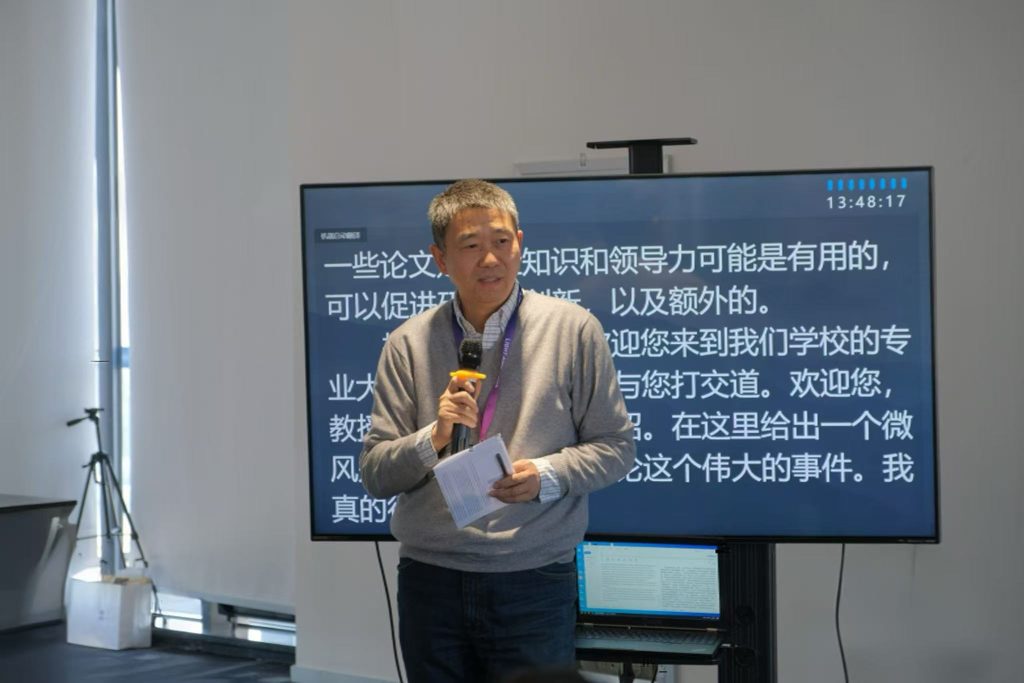
Professor Shugong Xu, Associate Vice President for Research and Impact at XJTLU, delivered the opening speech, recognizing AMRC’s achievements and sharing his hopes for its continued growth and success. "In less than a year since its founding, AMRC has become a vital part of XJTLU's strategic development and a key element in our ‘2+2+1’ strategy. The Center serves as a significant research platform in fields such as materials science, communications, semiconductors, and pharmaceuticals, bridging academia and industry. I look forward to AMRC achieving even more milestones in the New Year and continuing to produce internationally impactful research outcomes that support XJTLU’s mission to become a world renown research-led university."
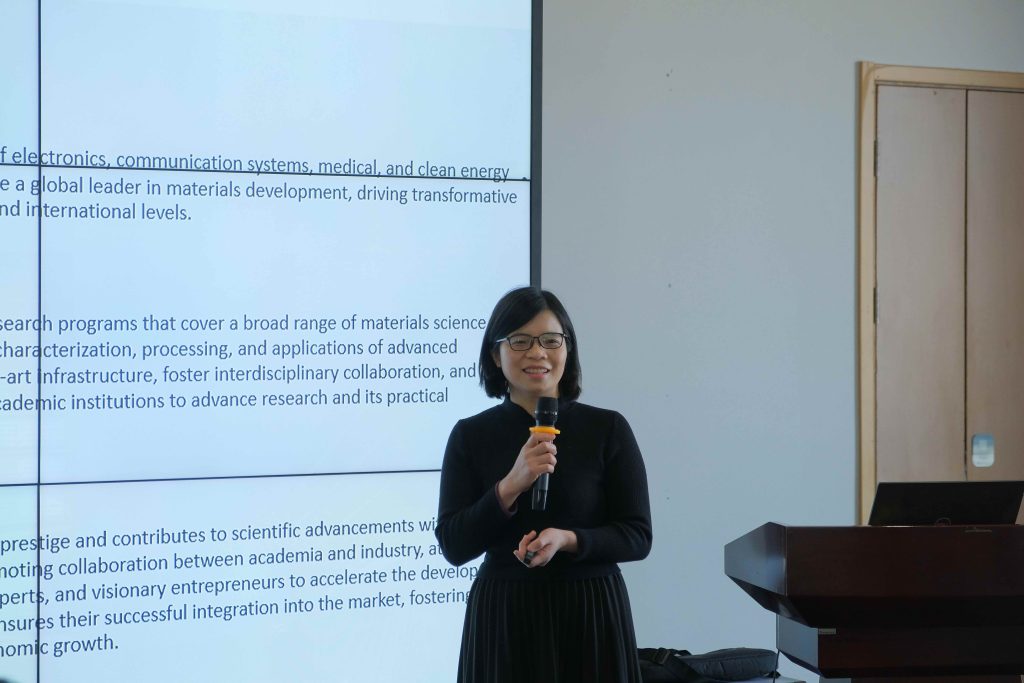
Professor Li Yang, Director of AMRC and Associate Dean for Research and Impact in the School of Science, XJTLU, summarized the Center’s major achievements and shared its future core development plans. She highlighted AMRC’s "Target-Oriented Four Key Partnerships" strategy, which defines four main types of collaborators based on the Center’s differentiated strategic dimensions and goals. By integrating resources in personnel, equipment, facilities, and projects, AMRC is advancing the integration of academia, research, industry, government, and society across various subfields of materials science. "With the support of our university leadership, schools, and departments, AMRC will continue its efforts in the New Year to establish itself as a leading international research platform in areas like electronic communication systems, medical technology, and clean energy," she stated.
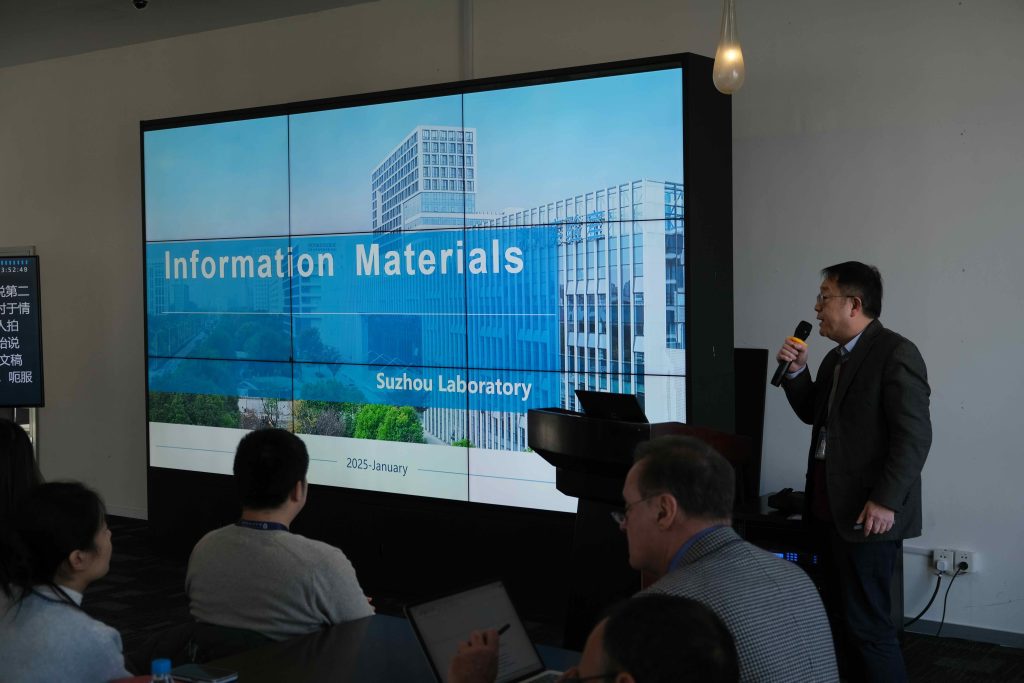
Professor Ruzhi Zhang from Suzhou Laboratory introduced the progress made by Suzhou Laboratory since its establishment in 2022, and shared the role of AI in common key technologies such as semiconductor materials and materials for integrated circuits.
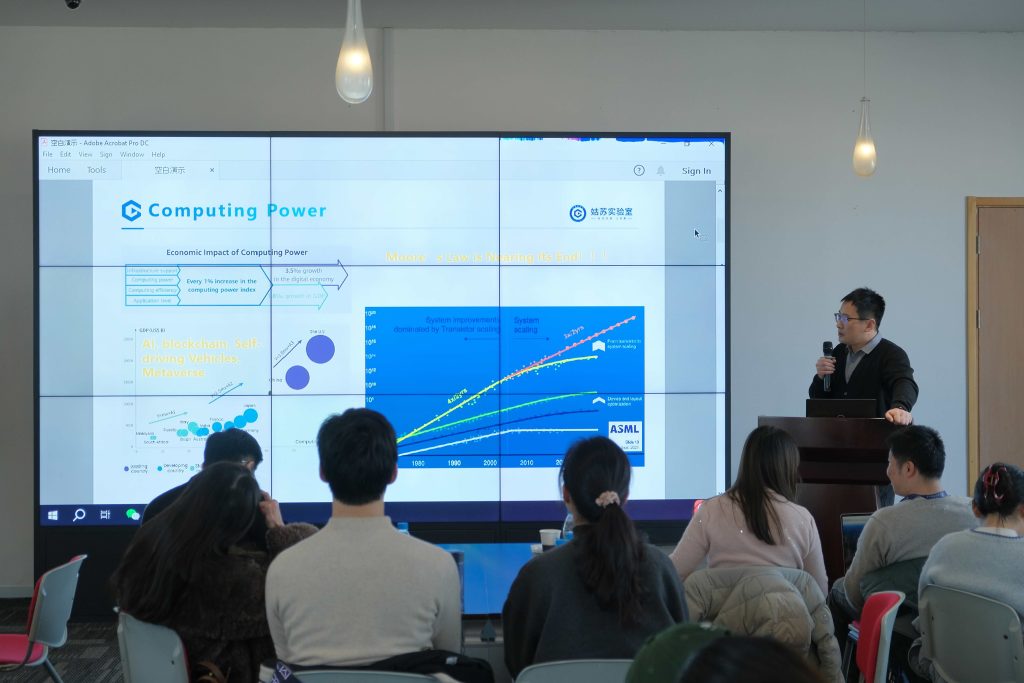
Dr Wenlong Yu from Gusu Laboratory delivered a presentation on superconducting quantum computers, tracing the century-long journey of quantum computing from concept to current breakthroughs and future potential. "Superconducting quantum computers, leveraging principles like quantum superposition and entanglement, can process complex data faster than classical computers. This capability will drive major breakthroughs in artificial intelligence, drug discovery, and climate modeling, while also optimizing industrial processes and solving global challenges," Dr Yu explained.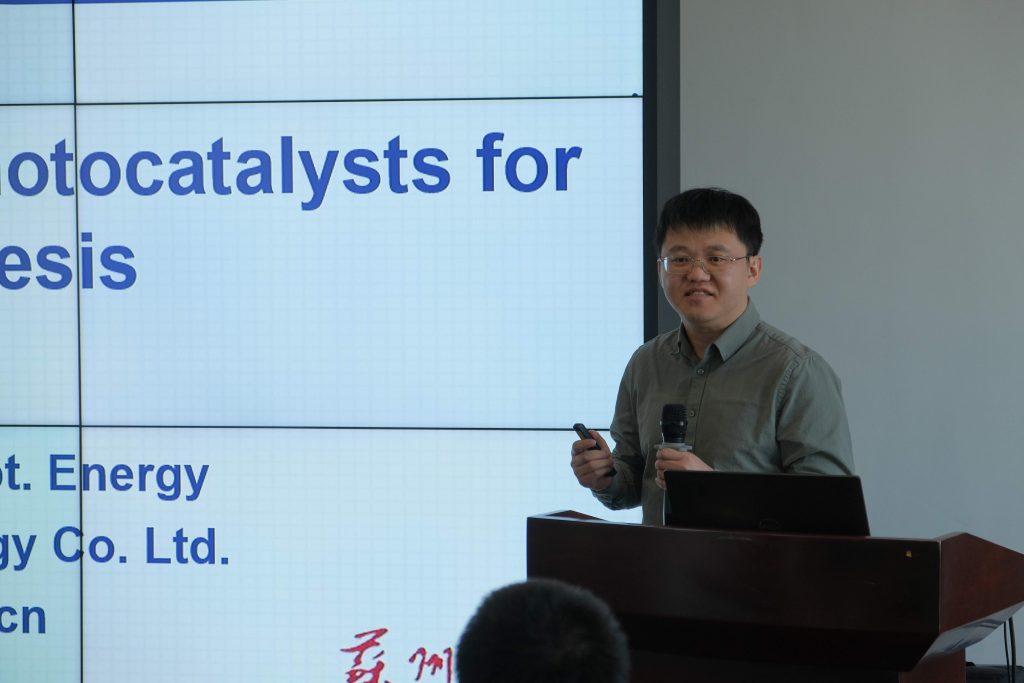 Professor Ren Su from the College of Energy in Soochow University focused his talk on "Surface Engineering of Photocatalysts for Precision Synthesis." He described his team’s breakthroughs in catalyst design, including the development of hydroxylated g-C3N4 catalysts that enable highly efficient and green reactions. "Photocatalysis holds immense potential, particularly in areas like air and water purification and hydrogen and CO2 conversion. We look forward to collaborating with AMRC to explore broader applications and high-value scenarios for this technology," he added.
Professor Ren Su from the College of Energy in Soochow University focused his talk on "Surface Engineering of Photocatalysts for Precision Synthesis." He described his team’s breakthroughs in catalyst design, including the development of hydroxylated g-C3N4 catalysts that enable highly efficient and green reactions. "Photocatalysis holds immense potential, particularly in areas like air and water purification and hydrogen and CO2 conversion. We look forward to collaborating with AMRC to explore broader applications and high-value scenarios for this technology," he added.
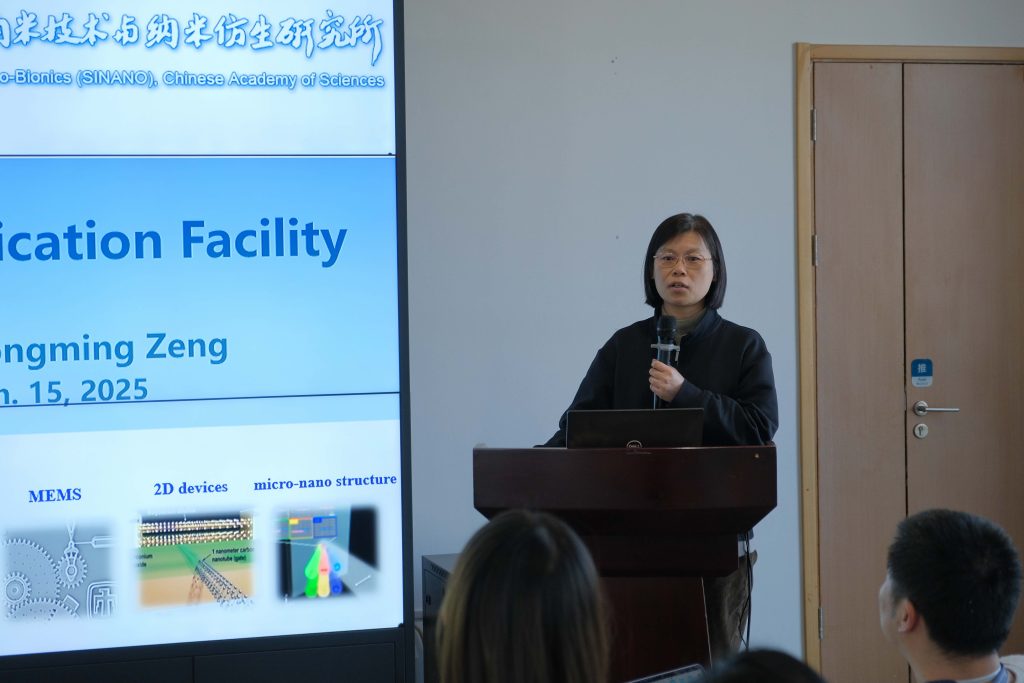
Dr Xuan Zhang from the Suzhou Institute of Nano-Tech and Nano-Bionics, Chinese Academy of Sciences, shared the evolution of the nanofabrication platform, including advancements in MEMS devices and Micro-LED display chips. She highlighted the institute’s breakthroughs in independently developing an 8-inch Micro-LED process line. "The platform has significantly contributed to national semiconductor and nanotechnology development, industrial transformation, and high-quality talent training. We look forward to collaborating with more partners like AMRC to achieve further breakthroughs," she stated.
The symposium concluded with vibrant discussions among participants. It successfully created a professional academic platform for researchers, while also fostering the integration of academic and industrial networks and achievements. The event showcased XJTLU’s research capabilities, strategic vision, and rich ecosystem in materials science. Looking ahead, AMRC remains committed to advancing innovations in materials science, collaborating with key partners to seize new opportunities, address challenges, and build a forward-thinking, impactful ecosystem integrating academia, research, industry, government, and society.
10 Feb 2025
